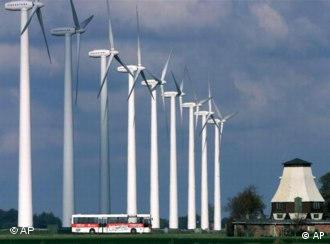The end of summaries of chapters 17 and 18 in David Bodanskyls Nuclear Energy (second edition). See the beginning of The Bomb Spreads for more on research vs power reactors.
From the Eisenhower program, Atoms for Peace to the Non-Proliferation Treaty, the premise was that military and civilian aspects of nuclear energy could be kept separate, and that aid with nuclear power and research reactors would help persuade governments to forego nuclear weapons.
One result of these policies has been the spread of research reactors throughout the world.
It can be debated whether this policy was wise or quixotic. However, the good or the harm has been done. [Positive aspects include the use of radionuclides in medical diagnosis and therapy and myriad industrial applications.] In examining the links between commercial nuclear power and nuclear weapons, it is necessary to keep this history in mind. A wide diffusion of nuclear knowledge and technology has already taken place extending to many countries that as yet have no nuclear power. Further, to the extent that peaceful nuclear energy has been involved in helping start weapons programs, research reactors, not power reactors, have, to date, been the apparent culprit.
Although there is little connection between nuclear weapons and nuclear power to date, some fear that the spread of nuclear power will facilitate the future spread of nuclear weapons, to either terrorists or to countries now without nuclear weapons. For example, countries with nuclear power can assert their right to uranium enrichment facilities in order to produce slightly enriched uranium, as both Brazil and Iran have done, saying they want “energy independence”. Or build a reprocessing plant to allow it to recycle plutonium for use in nuclear power, as Iran has. Both types of facilities lower technical barriers to weapons production, and help scientists and engineers gain familiarity with nuclear technology. They also provide cover for importing or manufacturing equipment for weapons (eg, see Harold Feiveson).
Countries with Nuclear Weapons, Admitted or Suspected
The most obvious nuclear weapons threats come from countries that already possess weapons:
NWSs which have no plans to renounce them, India and Pakistan, Israel, and North Korea. Commercial nuclear power did not contribute to weapons buildup in these countries, though small research reactors were in some cases important. The five NWSs all made bombs before nuclear power, Israel and North Korea have no nuclear power, India’s link is with the research reactor, nor was Pakistan’s program connected to nuclear power. There is no known case of plutonium being diverted from a power reactor for weapons.
Aspiring Weapons States
Iraq never had nuclear power nor expressed interest in nuclear power. Iran, as described above, is a different matter.
Though many prefer it, there is no recognized international mechanism for implementing a policy of barring nuclear power selectively. In particular, there is no international body that is likely to have both the will and the means to prevent major powers, such as Russia, China, and the United States, from providing nuclear facilities to other nations if they wish to do so.
Countries with Nuclear Power but No Weapons
Canada, Germany, and Japan have strong nuclear power programs and could develop weapons easily, but have not expressed an interest in doing so. Sweden has a strong nuclear power program, and abandoned its weapons program early.
Argentina, changed policy, according to their Under Secretary of Foreign Affairs, after it found itself blacklisted by the international community and cooperating with the “netherworld of third-world countries”. The carrot of help with nuclear technology, and the stick of technological denial, worked with Argentina. This method appears to have less success with countries that are less concerned than Argentineans with being part of the netherworld.

IAEA and Brazil agree to safeguards after two year standoff.
Countries with Neither Nuclear Power nor Nuclear Weapons
Any country that reaches the technological ability of 1940s US has the ability to make nuclear weapons. This is difficult for a subnational group without a “secure geographical base”.
Reducing Proliferation Dangers from Nuclear Power—Technological Measures
There is no infallible technological fix to the problem of nuclear proliferation. There are many routes to nuclear weapons for determined countries that possess even a modest industrial and scientific base. However, as we have seen the threshold is raised if there is no easy access to separated plutonium.
The Future of Nuclear Power (MIT), says,
The PUREX/MOX (Plutonium Recycle Mixed Oxide) fuel cycle produces separated plutonium and, given the absence of compelling reasons for its pursuit, should be strongly discouraged in the growth scenario on nonproliferation grounds. Advanced fuel cycles may achieve a reasonable degree of proliferation resistance, but their development needs constant and careful evaluation so as to minimize risk.
Several other countries, including France, Japan, and Russia, have been unwilling to agree. Worldwide and in the US, people disagree as to whether risks of reprocessing outweigh gains.
Technological means of reducing plutonium-related proliferation risks include the following:
• Once-through fuel cycle Don’t reprocess nuclear waste
• Colocation If reprocessing, in order to use fuel again or to simplify dealing with the waste, restrict the opportunity for diverting plutonium by putting reprocessing plants and reactors in one facility (Integral Fast Reactor, for example, or Generation IV program for new reactors).
• Thorium fuel cycle Plutonium is not separated out during the fuel cycle; however, there are no plans for this type of plant.
• Self-contained reactors Smaller countries could receive small self-contained units, these would be taken back at the end of the lifetime. [South Africa has expressed interest in exporting pebble bed reactors as self-contained units if tests are successful. See here and here for more information on these small (165 MW) reactors.]
Institutional Measures
Technology change is not sufficient to prevent weapons development, with or without nuclear power.
The most promising means of restraining nuclear proliferation is a combination of rigorous inspections, presumably by the IAEA, backed by economic pressures. Such mechanisms can be faulted for their initial failures in the detection and prevention for the Iraqi and North Korea nuclear programs—which, at times, proceeded vigorously despite the NPT and the IAEA inspections.
IAEA inspections did lead to the end of Iraq’s program. North Korea and Iran, on the other hand, test the effectiveness of the ability of the international community to inhibit weapons programs. Giving IAEA more power and resources would help.
The inhibiting power of inspections and economic coercion are not complete, but their effectiveness should not be underestimated. A number of countries have given up actual weapons. The unwillingness of India, Israel, and Pakistan to sign the NPT is testimony to its potential effectiveness.
Nuclear power and Moderation of Weapons Dangers
Nuclear power can decrease the need for oil, through the production of hydrogen for fuel cells [or much earlier through a shift to plug in hybrids]. If the demand for oil were not so tight, and prices so high, conflict over oil might decrease. [Many believe that the high prices of oil, and the amount of money going to governments such as Iran, increase dangers in the world. It would be ironic if Iran had less ability to issue threats about its presumed nuclear weapons program because nuclear power decreased the Westls appetite for oil.]
Nuclear power is being used to help rid the world of nuclear weapons material. As discussed in a previous blog, getting rid of weapons-grade uranium is easy—mix highly enriched uranium and natural or depleted uranium to make reactor-grade uranium. [Arms Control Association discusses the current state of this program. The US and Russia together still have 1,800 tonnes of highly enriched uranium, enough for perhaps 30,000 nuclear warheads.]
Weapons grade plutonium is much more of a problem. Russia and the US are expected to have 50 or more tonnes of plutonium when they reduce bomb inventory, enough for 20,000 bombs/country.
Options for keeping the plutonium out of circulation include the following:
• storage option in well-guarded facilities. This is the most immediate and cheapest solution. The following are considered viable long-term choices.
• spent fuel option Consume plutonium in power reactors, this would require redesign and be expensive
• vitrification option Mix plutonium and highly radioactive wastes, and store in glass, making plutonium difficult to reclaim for any purpose
• borehole option Place plutonium in deep boreholes, several km down. Recovery would be difficult to impossible.
The use of plutonium for power reactor fuel could supply almost one year of reactor fuel; more importantly, it gets rid of weapons material.
Policy Issues for the US
The coupling between nuclear power and nuclear weapons is weak. The issue is important and profound because the stakes are great. But in the end, nuclear power policies, and more particularly, U.S. nuclear power policies, are unlikely to have much impact—in either direction—on the nuclear-weapon policy of aspiring countries.
• However, weak is not zero. In a few cases (e.g., Iran), there may be a significant coupling and it would be useful from a weapons proliferation standpoint to discourage nuclear power in Iran and similar countries, or at least limit the type of facilities they have.
• The US (and other countries) could secure greater powers for the IAEA inspections work, provide intelligence data to the IAEA and United Nations, and support the UN being more determined to deal with nuclear threats. Support of international organizations will not prevent the US and allies from unilateral actions such as sanctions.
• Countries with an ability to enrich fuel could provide reactor fuel on advantageous terms to countries with small nuclear power programs, as a incentive forego their own enrichment plants.
• The political and moral position of the US and other weapon states would improve if nuclear disarmament were more rapid (article VI of NPT), and if the two holdouts among NWSs, the US and China, signed the CTBT.
• Abandoning nuclear power would accomplish little for nonproliferation. Japan, France, and other countries will not give up nuclear power.
Further, abandoning nuclear power without entirely giving up nuclear weapons might be seen as an empty gesture.
• The most effective tools to influence nuclear programs elsewhere might be economic pressures and incentives.
In the end, however, it should be recognized that success in preventing the use of nuclear weapons and in limiting nuclear proliferation depends on finding prudent and effective policies in areas that have little to do with nuclear power. Specific matters to address include achieving appropriate reductions in the U.S. and Russian nuclear arsenals, encouraging responsible control over weapons and nuclear material in the former Soviet Union, developing a spectrum of incentives and disincentives to dissuade potential proliferating states and their suppliers, and determining the appropriate role if any, for nuclear deterrence.
Also in this series
Part 1 Nuclear Bombs, Nuclear Energy, and Terrorism
Part 2 Today’s Bombs, Making a Bomb
Part 3 Making Bombs from Nuclear Waste
Part 4 Terrorist Targets
Part 5 Nuclear Proliferation—International Treaties
Part 6 The Bomb Spreads
Part 8 Wrapup on Nuclear Power Series









